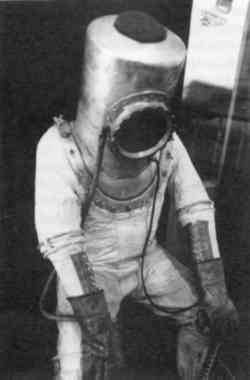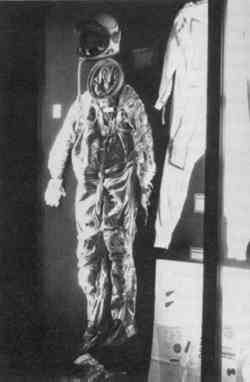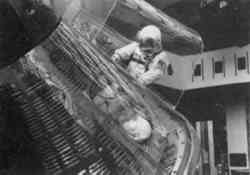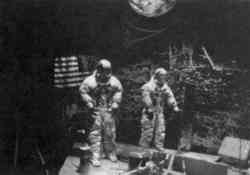HISTORY, CARE, AND HANDLING OF AMERICA'S SPACESUITS: PROBLEMS IN MODERN MATERIALS
MARY T. BAKER, & ED MCMANUS
5 CONCLUSION
One of the early objectives of this cooperative project between the Conservation Analytical Laboratory and the National Air and Space Museum was to explore inexpensive and practical storage systems for space age artifacts. Resealable metal foil gas bags that could be inflated with nitrogen is one option that was considered. Initial research indicated that the degradation of certain organic materials would not cease in an oxygen-free environment. Oxygen scavengers are another alternative that might be explored. Further development of a practical spacesuit storage bag requires a better understanding of spacesuit deterioration.
Companies that are presently involved in the manufacture of spacesuits have also expressed an interest in the research concerning the deterioration of historic spacesuit materials. This information may enable them to extend the functional service life of the current generation of suits.
Research and experience, to date, indicate that, at the present time, historic spacesuits contain unstable materials and the best storage can only slow, not stop, their deterioration. But the greater threat is improper handling, poor exhibit conditions, and certain misconceptions about modern materials. These situations can be corrected.
Fig. 1.
Wiley Post's pressure suit, ca. 1934. As the world's first practical pressure suit, this was an important step on the road to space. Post wore this suit while setting a high-altitude, high-speed record in his plane, the Winnie Mae (March 1935).
 |
Fig. 2.
A project Mecury spacesuit that has been on exhibit since 1976. The exhibit techniques that are contributing to the spacesuit's deterioration include improper support, internal fluorescent lights at close proximity to the suit and uneven lighting.
 |
Fig. 3.
Gemini IV, after conservation. First extravehicular activity by astronauts Ed White and James McDivitt, June 1965.
 |
Fig. 4.
Apollo 11 spacesuits worn by astronauts Edwin Aldrin and Neil Armstrong. The exhibit case was initially lined with cement dust to simulate the Lunar surface.
 |
|



